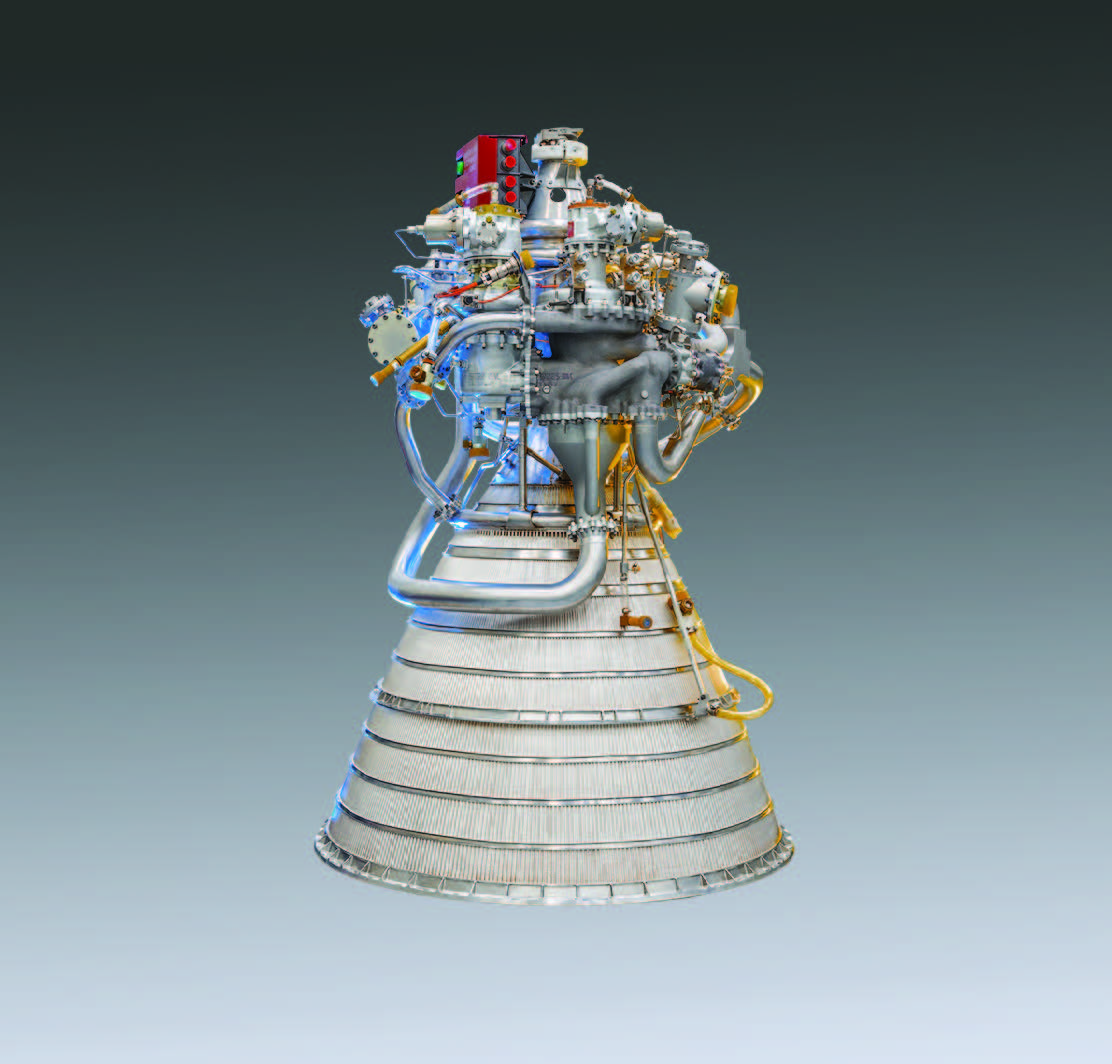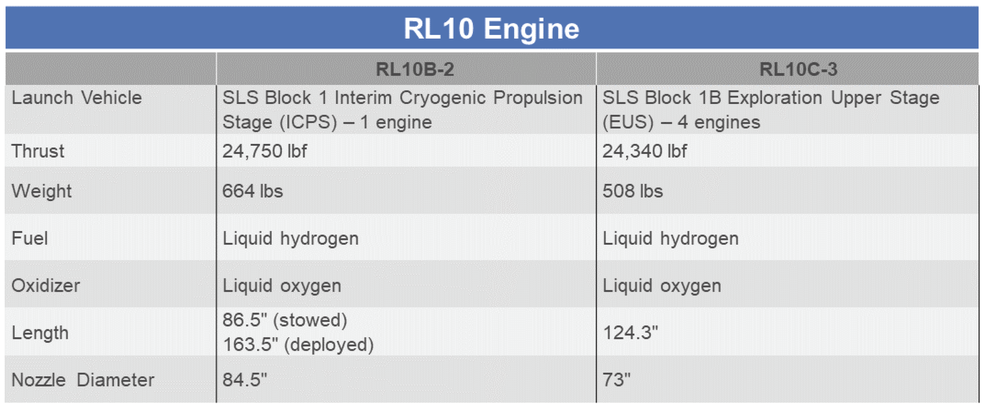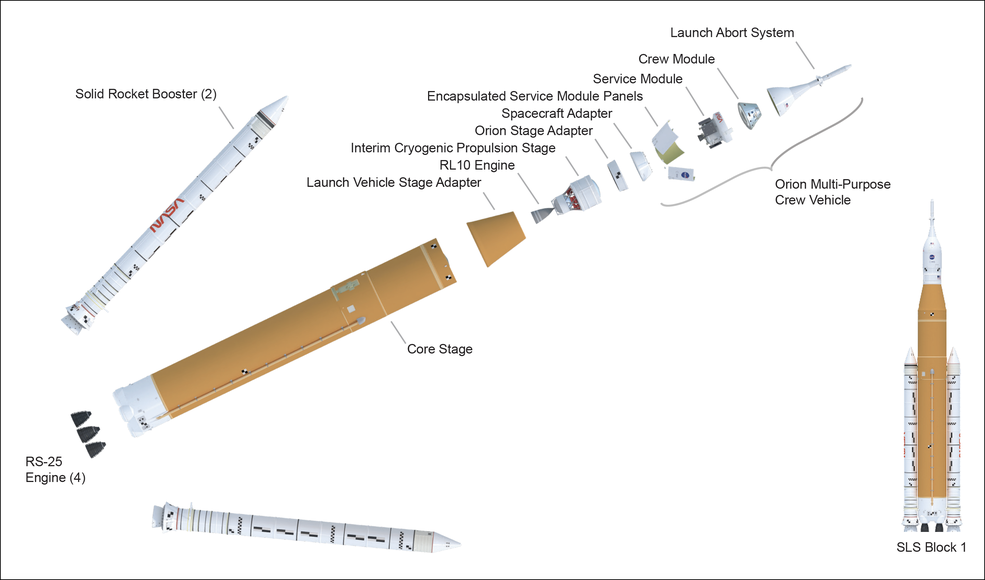Space Launch System RL10 Engine
Proven, Reliable Space Propulsion
During the Artemis I uncrewed test flight, a single liquid hydrogen and liquid oxygen-fed RL10B-2 engine producing 24,750 pounds (110kN) of thrust will serve as the main propulsion for the Interim Cryogenic Propulsion Stage (ICPS) that will send the Orion spacecraft to the Moon.
The rocket engine was developed by Pratt & Whitney in the late 1950s and was first flown in 1963. Since then, more than 500 RL10 engines have flown to space. The RL10 is manufactured by Space Launch System (SLS) lead contractor Aerojet Rocketdyne in West Palm Beach, FL, and they have provided upper stage propulsion to launch hundreds of satellites and have sent spacecraft to explore every planet in the solar system. With Artemis, an updated version of the RL10 will send people farther away from Earth than humans have ever traveled.
The first three Artemis missions will include an ICPS single RL10 configuration atop the SLS Block 1 rocket. As the rocket evolves to a more powerful Block 1B configuration, it will fly with the Exploration Upper Stage (EUS) that will use four RL10C-3 engines to send Orion and large cargos to the Moon. The four RL10 engines on EUS provide more than 97,000 pounds (431kN) of thrust, which will allow the rocket to send 40 percent more mass to the Moon.
uring the Artemis I uncrewed test flight, a single liquid hydrogen and liquid oxygen-fed RL10B-2 engine producing 24,750 pounds (110kN) of thrust will serve as the main propulsion for the Interim Cryogenic Propulsion Stage (ICPS) that will send the Orion spacecraft to the Moon.
The rocket engine was developed by Pratt & Whitney in the late 1950s and was first flown in 1963. Since then, more than 500 RL10 engines have flown to space. The RL10 is manufactured by Space Launch System (SLS) lead contractor Aerojet Rocketdyne in West Palm Beach, FL, and they have provided upper stage propulsion to launch hundreds of satellites and have sent spacecraft to explore every planet in the solar system. With Artemis, an updated version of the RL10 will send people farther away from Earth than humans have ever traveled.
The first three Artemis missions will include an ICPS single RL10 configuration atop the SLS Block 1 rocket. As the rocket evolves to a more powerful Block 1B configuration, it will fly with the Exploration Upper Stage (EUS) that will use four RL10C-3 engines to send Orion and large cargos to the Moon. The four RL10 engines on EUS provide more than 97,000 pounds (431kN) of thrust, which will allow the rocket to send 40 percent more mass to the Moon.
For more information about SLS, visit:
https://www.nasa.gov/artemis
https://www.nasa.gov/sls
http://www.twitter.com/NASA_SLS
http://www.facebook.com/NASASLS
http://www.instagram.com/exploreNASA




























